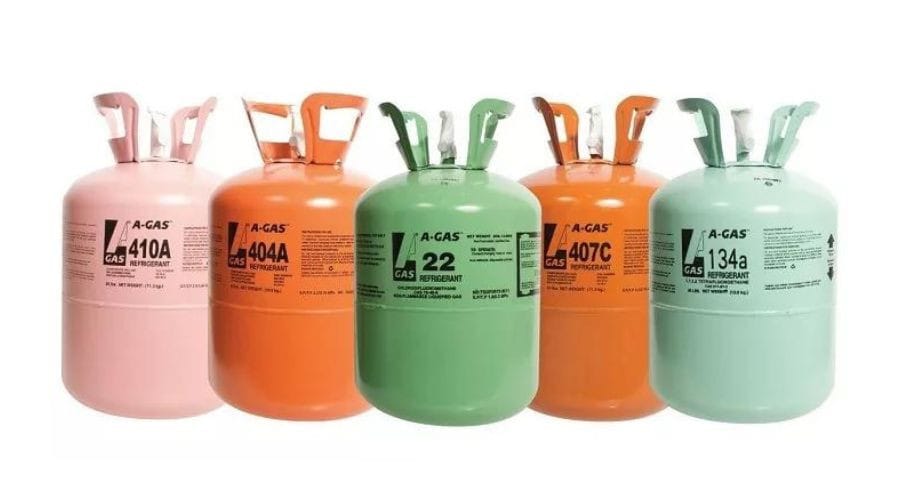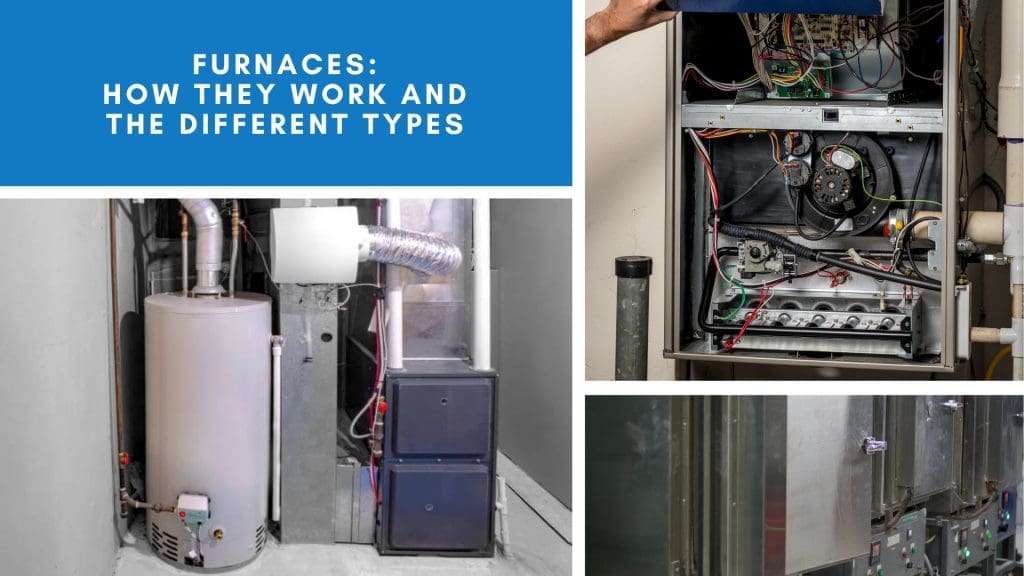Refrigerants are the unsung heroes of modern comfort and convenience, playing a crucial role in air conditioning, refrigeration, and heating systems. As society becomes increasingly aware of environmental sustainability and climate change, understanding the different types of refrigerants, their uses, and the new regulations surrounding them is more important than ever. This article aims to shed light on the complexities of refrigerants, their environmental impact, and the changes brought about by California’s new laws.
Introduction to HVAC Refrigerants and Coolants and Their Importance
Refrigerants are specialized substances used in heating, ventilation, air conditioning, and refrigeration (HVACR) systems to absorb and release heat. They undergo phase changes from liquid to gas and back, facilitating the cooling and heating processes essential for various applications, from household refrigerators to industrial refrigeration systems. Their efficiency and effectiveness are paramount for the proper functioning of these systems.
The importance of refrigerants extends beyond mere comfort; they are vital for preserving food, medications, and other perishable goods. In medical and technological fields, precise temperature control enabled by refrigerants is critical for the storage of vaccines, biological specimens, and sensitive electronics. Any disruption in the availability or functionality of refrigerants can have far-reaching consequences.
With the global push towards sustainability, the spotlight has turned to how refrigerants impact the environment. Some types of refrigerants, particularly those used in the past, have been found to contribute significantly to global warming and ozone layer depletion. This has led to a reevaluation of refrigerant types and the implementation of stricter regulations to mitigate their environmental footprint.
Common Types of Refrigerants and Their Properties
Refrigerants come in several types, each with its own set of properties that affect their application and efficiency. The most commonly used refrigerants include Chlorofluorocarbons (CFCs), Hydrochlorofluorocarbons (HCFCs), Hydrofluorocarbons (HFCs), and natural refrigerants like ammonia, carbon dioxide, and hydrocarbons. Each of these has unique thermal and chemical characteristics that determine their suitability for different HVACR systems.
CFCs, once widely used due to their stability and non-flammability, were found to cause significant ozone depletion and were largely phased out under the Montreal Protocol. HCFCs, introduced as a temporary replacement, also posed environmental concerns but to a lesser extent. HFCs, which do not harm the ozone layer, have become prevalent, but they still have high Global Warming Potentials (GWPs), which contribute to climate change.
Natural refrigerants are gaining traction as eco-friendly alternatives. Ammonia (R717), carbon dioxide (R744), and hydrocarbons like propane (R290) and isobutane (R600a) have low GWPs and do not deplete the ozone layer. However, they come with their own challenges, such as flammability and toxicity, requiring careful handling and advanced system designs to ensure safety and efficiency.
The Role of Refrigerants in Modern HVAC Systems
In modern HVACR systems, refrigerants are indispensable for achieving desired temperature and humidity levels in various environments. They circulate through the systems, undergoing phase transitions that facilitate heat absorption and release. This process is fundamental for air conditioning in residential, commercial, and industrial settings, as well as for refrigeration in food storage and transport.

The choice of refrigerant directly impacts the efficiency, safety, and environmental footprint of HVACR systems. Efficient refrigerants reduce energy consumption and operational costs, while safe refrigerants minimize risks of leaks and accidents. Environmental considerations, such as ozone layer protection and global warming mitigation, are increasingly influencing refrigerant selection and system design.
Advancements in HVACR technology are continuously improving the performance and sustainability of refrigerant-based systems. Innovations like variable refrigerant flow (VRF) systems, which allow precise control of refrigerant flow to different zones, and advanced heat exchangers are enhancing the efficiency and adaptability of HVACR systems. These developments are driving the industry towards more sustainable and cost-effective solutions.
Environmental Impact of Different Refrigerants
The environmental impact of refrigerants is a critical concern due to their potential to deplete the ozone layer and contribute to global warming. CFCs and HCFCs are notorious for their high ozone depletion potentials (ODPs) and have been largely phased out due to their harmful effects on the stratospheric ozone layer. Their replacement, HFCs, while ozone-friendly, have high GWPs, making them significant contributors to climate change.
HFCs, such as R-134a and R-410A, are commonly used in various applications, but their high GWPs have prompted regulatory actions to limit their use. The Kigali Amendment to the Montreal Protocol aims to phase down HFCs globally, encouraging the adoption of lower-GWP alternatives. This transition is crucial for reducing the overall greenhouse gas emissions associated with HVACR systems.
Natural refrigerants, due to their minimal environmental impact, are emerging as viable alternatives. Ammonia, CO2, and hydrocarbons have negligible ODPs and very low GWPs, making them environmentally superior to synthetic refrigerants. However, their adoption is limited by factors such as safety concerns and compatibility with existing systems. Despite these challenges, the push towards greener refrigerants is gaining momentum, supported by legislative and technological advancements.
Hydrofluorocarbons (HFCs): Benefits and Drawbacks
HFCs, introduced as replacements for ozone-depleting substances, offer several benefits, including stability, efficiency, and non-flammability. They have been widely adopted in air conditioning, refrigeration, and heat pump systems, providing reliable and effective thermal management solutions. Their chemical stability and lower toxicity compared to some natural refrigerants have contributed to their widespread use.
However, the major drawback of HFCs lies in their high GWPs, which significantly contribute to global warming. For instance, R-134a has a GWP of 1,430, meaning it is 1,430 times more potent than CO2 in terms of its warming effect. This has led to increased scrutiny and regulatory measures designed to reduce their usage and encourage the shift to lower-GWP alternatives.
The challenge with transitioning away from HFCs involves balancing performance, safety, and environmental impact. While HFCs are effective and safe, their environmental footprint necessitates the development of new refrigerants and systems that can deliver similar benefits without the adverse climate effects. This transition requires coordinated efforts from manufacturers, policymakers, and end-users to achieve sustainable solutions.
Natural Refrigerants: An Eco-friendly Alternative
Natural refrigerants, such as ammonia (R717), carbon dioxide (R744), and hydrocarbons like propane (R290), offer environmentally friendly alternatives to synthetic refrigerants. These substances have negligible or zero ODPs and very low GWPs, making them ideal candidates for reducing the environmental impact of HVACR systems. Their adoption is increasingly seen as a key strategy in combating climate change.
Ammonia is highly efficient and has been used in industrial refrigeration for decades. It has a GWP of zero but comes with challenges such as toxicity and corrosiveness, necessitating robust safety measures and specialized equipment. Carbon dioxide, with a GWP of 1, is non-toxic and non-flammable, making it a safer option. However, it operates at higher pressures, requiring systems designed to handle such conditions.
Hydrocarbons like propane and isobutane are excellent refrigerants with low GWPs and high energy efficiencies. They are already in use in various applications, including domestic refrigerators and small-scale air conditioning units. The primary concern with hydrocarbons is flammability, which demands stringent safety standards and careful system design. Despite these challenges, the push for natural refrigerants is gaining momentum, driven by the need for sustainable and eco-friendly cooling solutions.
Understanding Hydrochlorofluorocarbons (HCFCs)
Hydrochlorofluorocarbons (HCFCs) were developed as transitional replacements for CFCs, offering lower ODPs while still being effective refrigerants. Common HCFCs include R-22, which was widely used in residential and commercial air conditioning systems. While they were seen as an improvement over CFCs, HCFCs still pose significant environmental risks, particularly concerning ozone depletion and global warming.
The phase-out of HCFCs is part of a global effort to reduce the environmental impact of refrigerants. Under the Montreal Protocol, the production and consumption of HCFCs are being gradually reduced, with complete phase-out targets set for the coming years. This has led to increased demand for alternative refrigerants and new technologies that can deliver similar performance without the adverse effects.
The transition away from HCFCs poses challenges for the HVACR industry, including the need to retrofit existing systems and adopt new refrigerants. Businesses and consumers must navigate the complexities of switching to compliant and efficient alternatives, which often involves significant upfront costs and technical adjustments. However, the long-term benefits of reduced environmental impact and regulatory compliance make this transition necessary and worthwhile.
California’s New Laws on Refrigerant Usage
California has been at the forefront of environmental regulation, and its new laws on refrigerant usage are a testament to this commitment. The state has introduced stringent regulations to phase down HFCs and other high-GWP refrigerants, aligning with international efforts like the Kigali Amendment. These laws aim to reduce greenhouse gas emissions and promote the use of lower-GWP alternatives in various applications.
The new regulations, enacted by the California Air Resources Board (CARB), include specific measures such as the prohibition of certain high-GWP refrigerants in new equipment, requirements for leak detection and repair, and mandatory reporting of refrigerant usage. These measures are designed to minimize the release of high-GWP refrigerants into the atmosphere and encourage the adoption of more sustainable options.
Compliance with these laws is crucial for businesses operating in California, as non-compliance can result in significant fines and penalties. The regulations also include provisions for financial incentives and grants to support the transition to lower-GWP refrigerants, helping businesses offset the costs associated with adopting new technologies and practices. By setting these standards, California aims


